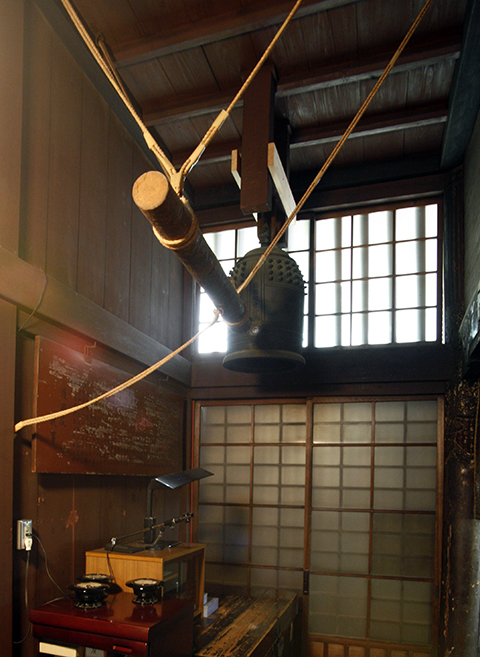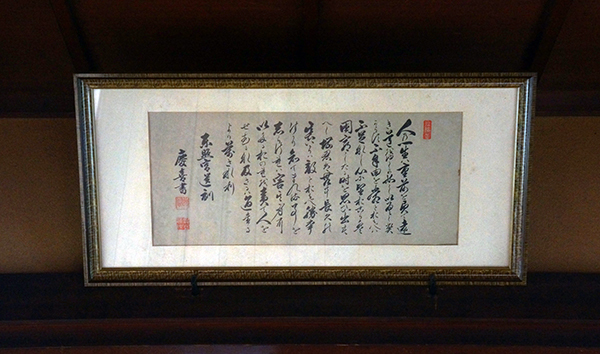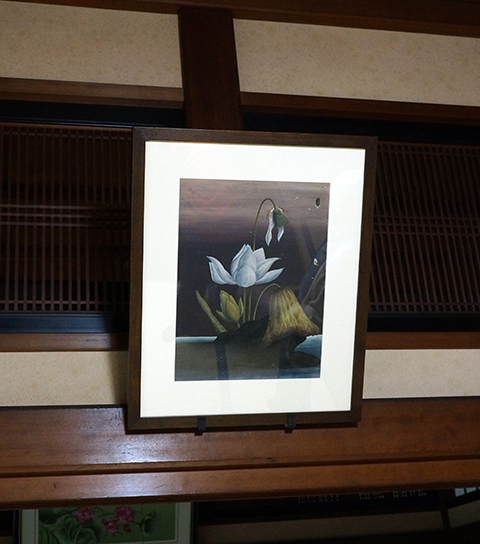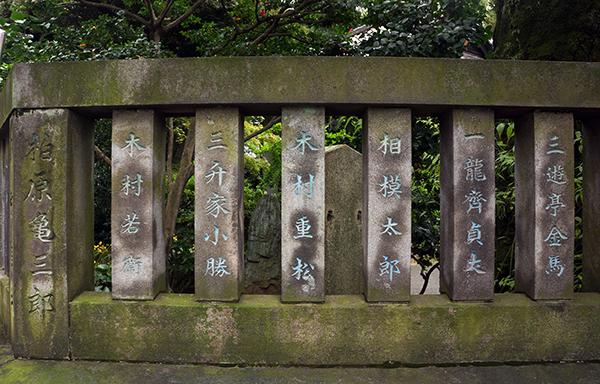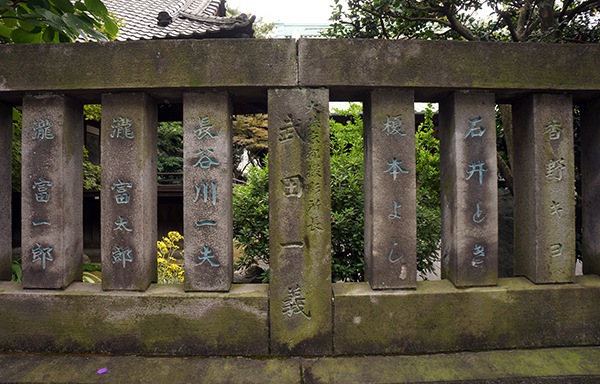
You can see crests of feudal lords who made donations to Gokokuin here and there.
We talked with Shujyun Kanda, the chief priest of Kan-eiji Temple and Toeizan Rinnoji, and the former chief priest of Gokokuin. This interview was conducted in October 2015.
Q: Could you tell me about the history of Gokokuin?
Gokokuin is the oldest temple among branch temples of Kan-eiji Temple. It was founded as a shrine temple of Kan-eiji Shakado by Buddhist Priest Shojun who was said to be a right-hand man of Buddhist Priest Tenkai. The present main building was built as Shakado of Kan-eiji Temple. It was burnt down in 1717, so rebuilt in 1722. Although Shakado was relocated several times, it was designated as the main building of Gokokuin when the final relocation was completed in 1927. Two ginkgoes were also brought to the new site at the time of the final relocation. Although it was unusual for the Ueno area, the main building survived the Battle of Ueno, the Great Kanto Earthquake and the Second World War.
Q: I heard that a part of Gokokuin's buildings is designated as a cultural property.
The first floor of the living quarters was designed by Shinichiro Okada, a professor at Tokyo Fine Arts School, and built in 1927. The whole living quarters was roofed with tiles. It was designated as a national tangible cultural asset in 2001.
Q: Gokokuin is famous for Daikokuten. What is the reason Daikokuten is the principal image?
The principal images of Gokokuin are Sakyamuni and Daikokuten. Sakyamuni sits behind Daikokuten. Since Iemitsu, the third Tokugawa shogun, granted a picture of Daikokuten to this temple, Daikokuten has also been enshrined. Properly, Sakyamuni should be conspicuously enshrined, but many merchants now worship Daikokuten, so it is difficult to openly enshrine Sakyamuni. When fraternity meetings had been held from the Meiji to Taisho Period, vast numbers of people visited this temple.
Q: Can visitors see the picture of Daikokuten granted by Iemitsu?
It is stored in a small sacred cabinet at ordinary times. It is exhibited to the public at special occasions, such as on the third of each month, New Year's Day, every 60 days, and the day before the calendrical beginning of spring.
Q: When I see the structure of the main building, I can feel its long history.
Ceilings and transoms in Shakado are blackened because sacred fire is lit at fete days of Daikokuten. Unfortunately, a mural that is said to be painted by Shigenobu Kano has also deteriorated. I think a Chinese-style lion and peony are depicted in the painting. The image of Aizen-myo-o painted on silk fabric, which is designated as an important cultural property, is deposited in Tokyo National Museum.

A mural painted by Tanyu Kano
Q: The temple bell is a rare article, isn't it?
At first, a bell granted by Buddhist Priest Tenkai, which is said to be used by Ieyasu as an alarm bell in battle fields, had been tolled in this temple. However, it was cracked, so the a new bell was recast. It has been a historic bell, so the government did not order to supply it during wartime. Even now, people who visit this temple on New Year's Eve can toll the bell.
Q: Many people have made contributions to this temple from old times, haven't they?
Names of Kabuki actors who donated the sacred cabinet, in which the image of Daikokuten is now stored, are written on it. Also, many feudal loads donated to this temple when it was rebuilt after a fire occurred in the Kyoho Period, so their family crests are inscribed on the pillars.







